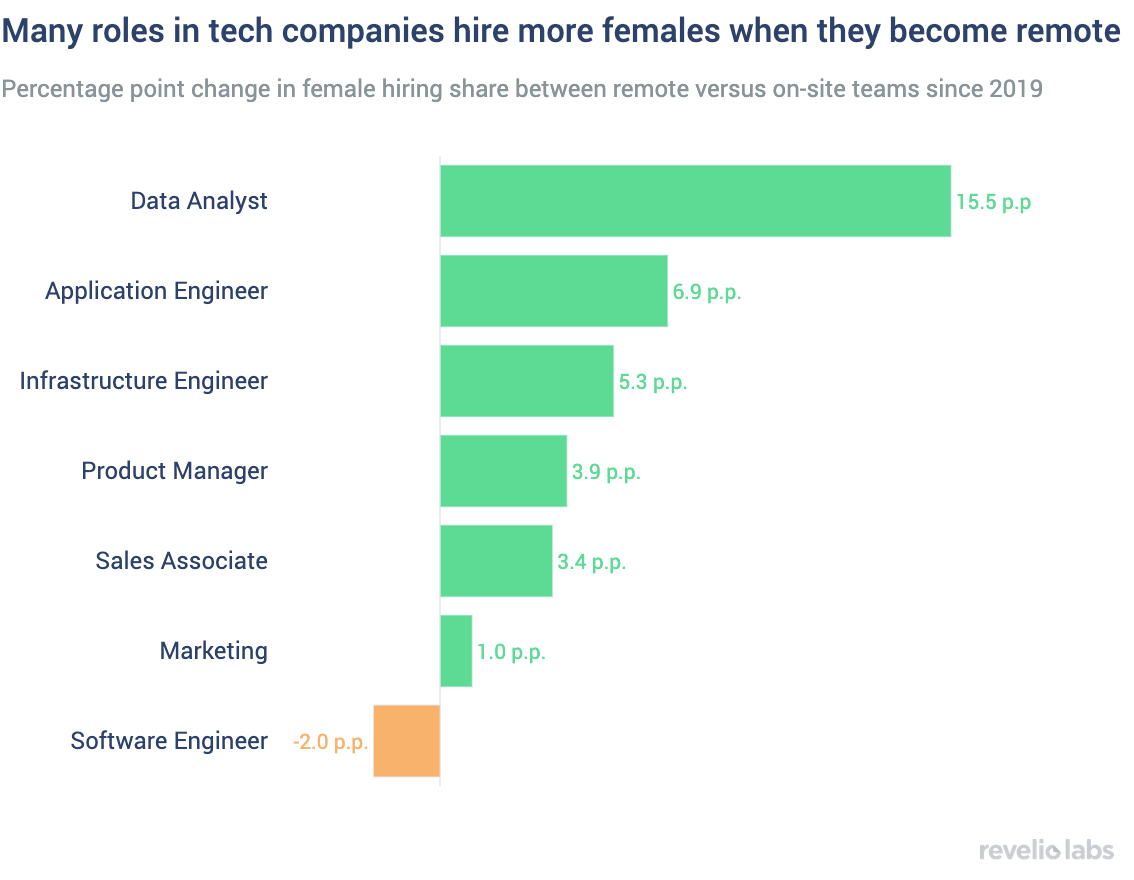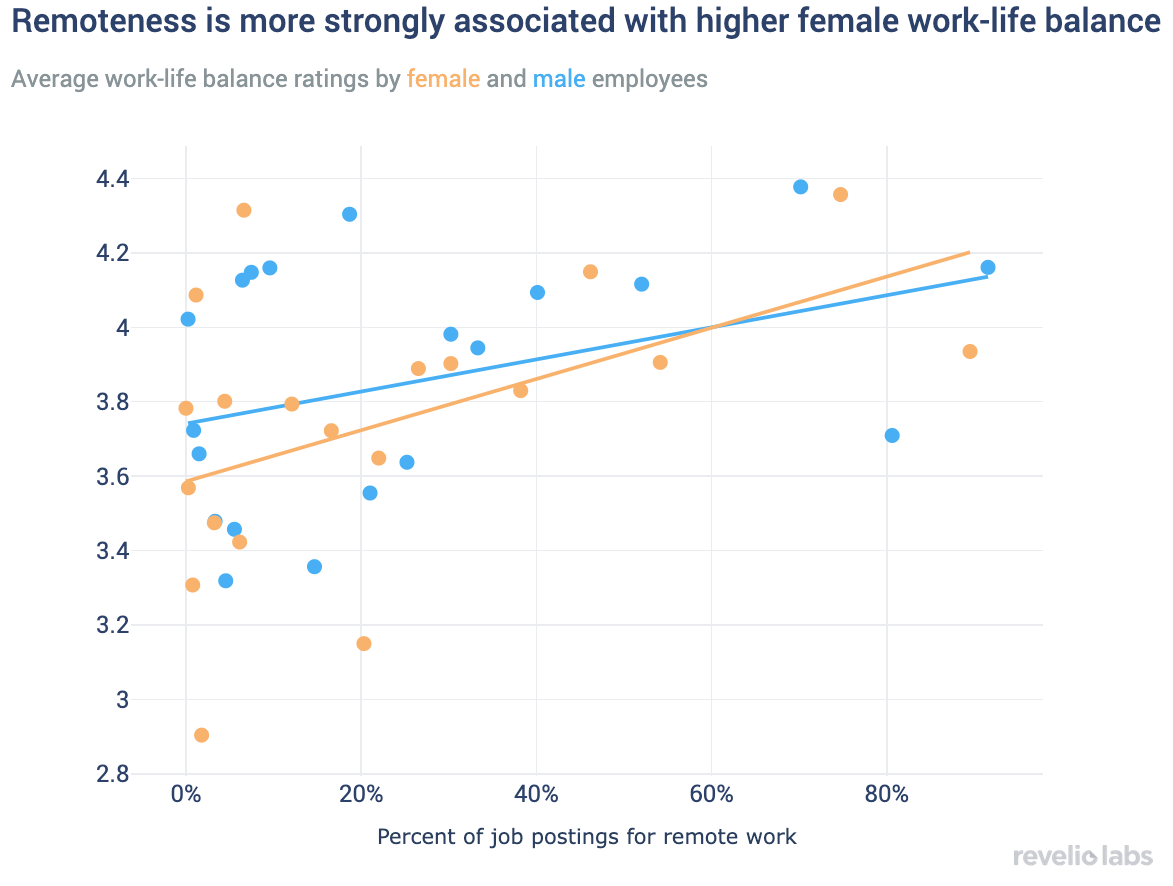We Can Do It (Remotely)!
Here is how remote work enables women to have fulfilling careers in tech

Company “remoteness” – measured as the fraction of postings that are for remote work – is associated with a larger share of female hires. Technical, marketing, and sales roles have faster growth in the share of female hires in remote companies compared to non-remote companies.
Company remoteness is also associated with higher work-life balance sentiment for female workers.
While remoteness is associated with longer time to promotion, the rates are the same for female and male employees.
By moving away from the classic office setting, remote work has unprecedentedly expanded the options available to both employers and employees. The flexibility offered by remote work is particularly enticing for female workers who aim to engage more actively in the labor market and foster their career advancement while maintaining a healthy work-life balance. On the one hand, remote work can increase gender equality in the labor market by offering more opportunities for women to participate in the labor force. On the other hand, remote work can be a curse for women if it makes them fall behind in career advancement. This week, Revelio Labs tries to answer the following question: Is remote work a blessing or a curse for women?
Our study, featured in Bloomberg, focuses on the tech industry primarily because much of its work has proved to be feasible in remote settings. First, we examine whether employers discriminate against women in hiring for remote positions. We find a positive correlation between a company’s “remoteness” – measured by the fraction of its postings that are for remote work – and female hiring. Going from being fully in-person to fully remote is associated with a 5.8 percentage point increase in the share of women in new hires.


When holding constant factors such as role, company, and time, our labor market analysis reveals that changing a job from being fully in-person to fully remote corresponds to a 0.7 percentage point increase in the representation of females among new hires – a small but mighty win for female workers.
Next, we examine which roles in tech have seen the greatest increase in female representation among new hires. We find that when roles in data analysis, application engineering, infrastructure engineering, and product management become remote, female hiring increases relative to the same roles in companies that remain in-person.


Sign up for our newsletter
Our weekly data driven newsletter provides in-depth analysis of workforce trends and news, delivered straight to your inbox!
We have previously shown that employees generally prefer remote work. But do female employees prefer it more than male employees? Our labor market analysis uncovers a positive association between a company’s remoteness and employee work-life balance ratings. The correlation is stronger for female employees. We estimate that in a company that goes from being fully in-person to fully remote, average work-life balance scores increase by 0.61 points for females and by 0.46 points for males.


Although remote work increases employees’ job satisfaction, it might not be helpful for their career progression. An increasing share of remote work is associated with longer time to promotion for both men and women. Going from being fully in-person to fully remote is associated with 5.2 more months to promotion for men and 5.5 more months for women.


Far from being a curse, remote work is more of a blessing for women - especially women in technical roles. Whereas the benefits are particularly strong for women, the drawbacks of remote work seem to impact both genders equally.

